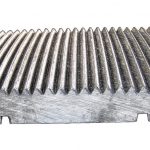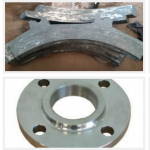A Detailed Overview of Investment Casting
In industrial processes, metal casting is done to design products into complex shapes and sizes. The different casting methods involves pouring liquid metal into a hollow mould and cooling it for metal extraction. You can rely on reputable investment casting manufacturer in West Bengal for high-quality products with excellent surface finish.
Factors like cost, feasibility and design matter while choosing a casting method. Most manufacturers prefer investment casting to fabricate components with minimal material waste and energy consumption. You can produce intricate parts with outstanding features as per the requirements.
The process of investment casting is centuries old, based on the lost wax casting method. The engineers coat a wax mould with liquid material. The wax starts heating up, and it starts melting. Then they pour this molten metal into the mould cavity, replacing the cavity wax with the metal. Finally, after the metal cools, they separate it from the mould.
The name is “investment casting” because the mould pattern is “invested” along with the refractory material (liquid). Since it follows the method of pouring liquid into the cavity, investment casting takes it one step further by surrounding the mould using the material. Hence, the mould becomes “invested”.
The Method of Investment Casting
- Pattern Creation
- They make the pattern with the same details as the finished part, except it allows for shrinking or thermal contraction.
- They make patterns using the metal injection dye.
- Creating The Tree
- After producing the wax pattern, they assemble with other wax components.
- This forms the metal delivery system with the gate.
- Depending on the finished product’s configuration, they can process multiple wax patterns utilizing a single tree.
- Creating The Mold Shell
- Next, they dip the entire wax pattern in a ceramic slurry and covers it with sand stucco to dry.
- They repeat cycles of wet dipping and stuccoing to form a thick shell. It is partially dictated by the product canaltaronja.cat size again.
- Once the ceramic shell dries out, it turns strong to retain the molten metal.
- Wax Removal
- They place the assembly in a steam autoclave to melt the wax away.
- They remove the residual wax pattern and gating material while the ceramic mould remains with a cavity.
- This high temperature increases the stability of the ceramic material while minimizing shell reaction while pouring.
- Melt And Cast
- They preheat the mould with molten material
- They produce an alloy using this process, administering air melting or vacuum melting
- Final Operations
- The caster break the mould shell after the casting cools down. It happens in a knockout operation.
- They cut the runners and gates from the casting. They also perform grinding, machining or post-processing sandblasting, if necessary.
Benefits
You can easily produce different range of castings, weighing even more than 1000 pounds. The investment casting method is flexible, allowing the production of versatile and intricate shapes with precision. These products have smooth surfaces and detailed finishing, therefore making a lasting impression. The designers can reach 100% dimensional accuracy compared to conventional castings.
Houston India Private Limited provides top-grade investment casting services, designing premium quality products with no quality compromise.




